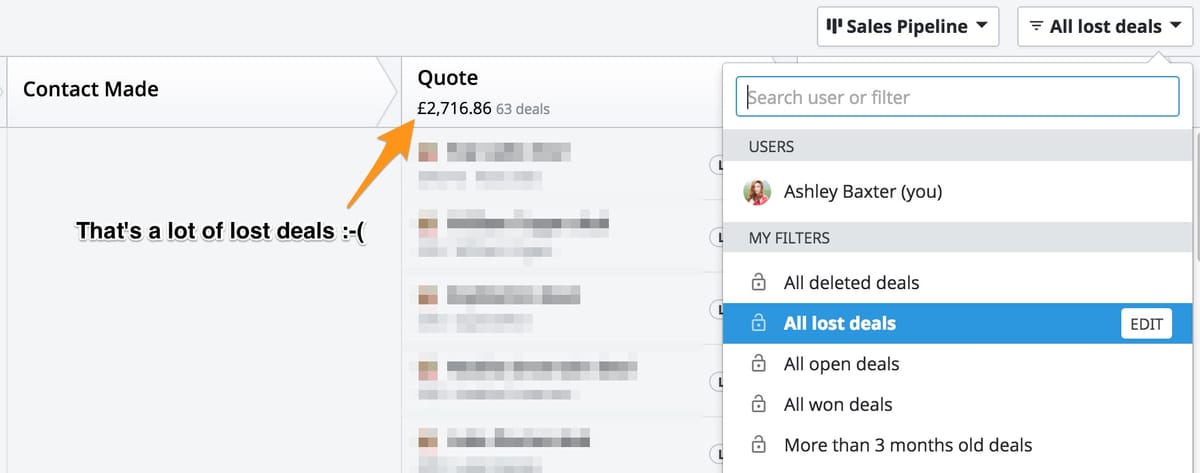An upside of manually processing quotes is striking up conversation with potential customers. If a quote doesn’t convert to a policy, I get to ask why.
The most common response is:
“Your quote was more expensive than others. I got it cheaper elsewhere.”
Now that I know price is the biggest factor I’m losing sales, surely there’s something I can do about it? Of course. I can work with a cheaper insurer or cut my commission. But I’ve chosen not to do either of those things.
Why Would I Want To Sell A Cheap Product?
I take pride in offering a good policy, and working with an underwriter who has a reputation for paying out claims.
With Jack’s metric for success isn’t just commission—it’s trust. I won’t offer a cheap policy that doesn’t pay come claim time. Perhaps I’d earn more money in the short-term, but there’s something more important at stake here. Building a business I’m proud of and earning customers’ trust.
When I think of the investments I’ve made to launch my business, did I hire the cheapest developer to build With Jack? The cheapest copywriter? No way.
I didn’t have the biggest budget, but I still invested in talent—in my business. Fiverr could have saved me money, but I paid for a premium service because I wanted an experienced team I could trust. I wanted quality. It’s a no-brainer.
Why is it different with insurance? Why is cheaper considered better when buying a policy?
It isn’t.
This thought process is an unfortunate by-product of the popularity of comparison sites. They’ve encouraged a buying behaviour of judging insurance solely on price. You don’t look at policy features, company reviews or customer service. You look at a table of prices and select the cheapest.
Comparison sites have been around for over a decade. With Jack has been around for 2 months. Challenging a behaviour that’s been ingrained in buyers for over 10 years is proving difficult.
Taking A Smaller Commission
The alternative to not selling a cheap policy—but still competing on price–is to cut my commission.
In some instances I have done this. When someone’s made it clear they’re keen to buy but the price is slightly out of their budget, I bring my share down.
But that’s not a solution. I’m not earning bags of money from each policy I sell. For £100,000 of cover I earn a modest £26. For higher levels of cover, I can net between £40-70 commission.
I’m in this for the long-term. I want to build With Jack into a sustainable business, therefore I must operate as a business and earn money.
Commission is what enables me to keep working on With Jack. Not just for it to exist, but to blossom into the business I’ve always dreamed of. Right now it’s a tiny version of what I envision it to become.
That’s not going to happen if I don’t earn money to pay myself and reinvest into the business. Nor will it happen if I sell a cheap policy that lets people down when it comes time to making a claim.
That Was A Nice Rant. Now What?
There are two, big challenges I’m facing with building an insurance business.
- The audience I serve is still relatively new. Insurers haven’t been targeting freelance designers and developers, so information on how insurance applies to them and what problems it solves is sparse. I’m working on addressing that
- For those who understand the role insurance plays, I’m fighting with the price-driven buying behaviour. With Jack isn’t overpriced. We might charge an annual premium of £160 for £100,000 of cover while a competitor charges £120. That’s only a £40 difference, yet it matters when people are simply looking at price. What about the more important factors? Better cover with additional features, customer benefits or quality of customer service
I don’t think there’s a quick fix, but I know it falls on me to better communicate the value of insurance. Like I said, it’s tricky challenging a well-ingrained buying behaviour.
I do know I’m not going to sell a cheap policy. 73% of people don’t trust their insurance provider and I don’t want to contribute to that statistic. In fact, I want to work towards turning that statistic around.

